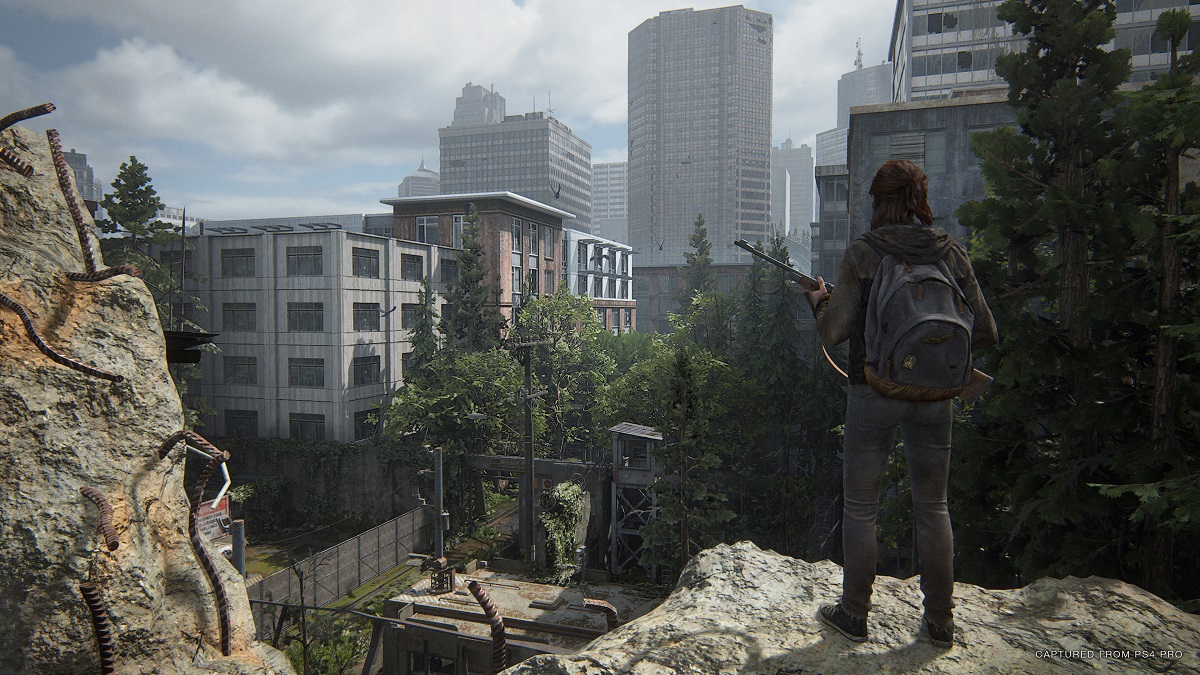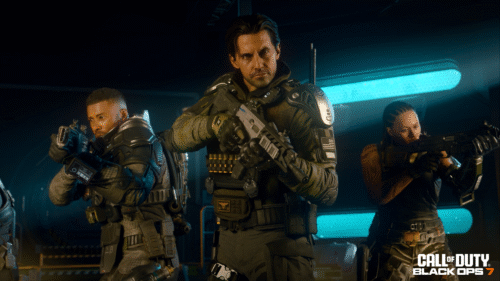In 2013, Sony and a developer named Naughty Dog released “The Last of Us,” a game that would become one of the most beloved of its generation. Taking the treasure-hunting formula of Naughty Dog’s “Uncharted” series, “The Last of Us” redefined post-apocalyptic gaming, delivering an experience that worked with emotion as much as action. Like the “Uncharted” games, “The Last of Us” cribbed heavily from a cinematic playbook, incorporating visions of the end of the world that we have seen before in major motion pictures but telling its own story in a way that enraptured viewers in every way. I’ll never forget the first time I played even just the intro to that game—an emotional, terrifying experience that sets the stage. I was hooked into this world, and eventually introduced to a grizzled fighter named Joel and a teenage girl named Ellie. And then “The Last of Us” ended with such a perfect grace note that even fans of the game questioned whether or not it should have a sequel. How do you top this one? Why mess with perfection?
That question clearly hung in the air as the developers at Naughty Dog set to work on “The Last of Us Part II,” a game that doesn’t just replicate what worked seven years ago but expands on it in ways that are both terrifying and remarkable. Over 20-30 hours—the low end for experienced gamers more likely to flee encounters and much higher for those looking to find every collectible and stealthily kill every enemy—“The Last of Us Part II” delivers one of the most engaging, terrifying, and breakthrough game experiences of all time. It is a brutal game, one that confronts extreme violence and horror in a way that cuts to the bone while keeping the player on edge for its entire runtime. Most of all, this is refined, complex storytelling that centers on cycles of violence, the blinding nature of vengeance, and the impact a brutal world would have on humanity. How do you stay decent and humane in a society where those traits are in increasingly low supply?
Now this is where a critic would typically dig into and recount the game’s story, but Sony has been concerned about letting this experience unfold for gamers in an unspoiled, organic way. While this spoiler-phobia is often overblown, it’s understandable here given the secrecy around this project over the years and the daring way the writers allow it to play out for gamers. More than two dozen hours into “The Last of Us Part II,” I still wasn’t sure where the story was taking me next (or even where I wanted it to go or how I wanted it to end, which is even more of an accomplishment). Long gone is the predictability of game screenwriting in which there’s a good guy trying to get to a bad guy and maybe save a princess. The character-driven horror-drama of “The Last of Us Part II” forces the gamer to question allegiances and live in the moment—the panicked, terrified moment.

That last part is key. Every minute of “The Last of Us Part II” feels urgent. This game keeps you locked into its immediacy with a possibly deadly encounter behind every corner, creating more legitimate tension than any game before it. Part of the reason for that is the stunning brutality. Stealth kills don’t just drop a bad guy, they come with the sound of a knife entering flesh, and often gurgling blood. When you shoot an enemy, his friend will sometimes call out his name—you didn’t just kill a soldier, you killed a guy with a name and a friend. Body parts rend from bodies with incredible, gory detail, and the death count rises in a way that feels like it has actual impact. On one level, this is the story of how violence begets violence. A world in which factions form and people have to fight to stay alive can only lead to more and more intense bloodshed. Resources like ammo are in short supply in this game, but it’s really about how resources of basic humanity can dwindle away.
Without spoiling either game, a major decision was made by Joel at the end of “The Last of Us,” and that choice ripples through the entirety of the second part of this landmark experience. Given that this is a story about the consequences of a violent world and a pandemic that killed most of the population, and this game couldn’t feel timelier. But it’s also about trauma, and the difficulty in finding peace when your life is filled with violence. How do we live with decisions made by and for us that shaped our entire existence?
“The Last of Us Part II” feels revolutionary in terms of authorship within a cinematic storytelling construct. There may not be dialogue branches or character decisions that present the player with different endings, but there is a keen sense of gamer control that’s lacking from pretty much every other game like this one. Many of the chapters take place in nearly open-world settings, in which you can explore different buildings and pathways, looking not just for secrets and collectibles but leading to a deeper, three-dimensional world. Early in the game, a cut scene took place for me in a music store and it dawned on me that some people won’t see this sequence at all. I had found what I needed to find and was just exploring on my way back. I’m positive there are other diversions, secrets, and subplots that I missed, especially in the final third of the game when I kind of adopted a “panic and run” strategy.

The game also allows for different gameplay strategies from minute to minute. You can play most of the game without shooting a bullet, either using stealth to get around the enemy, sneak up on them, or fine-tune your melee skills. Strategy feels organic, changing from day to day and moment to moment, depending on the situation and the player’s mood. We have written a great deal about games that employ a narrative style influenced by cinema here at the site, but I’m not sure a game has ever blended the two art forms as fluidly as this one. You can feel both the hand of the writing team and yours on the controls. It’s invigorating for someone who loves cinematic video games, and could really carve the path forward for the PS5 generation.
“The Last of Us Part II” will be too much for some people—too scary, too intense, too epic, and, most of all, too violent. (Pet lovers should be warned that some of the enemies have dogs, and while stealth is often an option, sometimes knives and explosives are too.) It’s a heart-racing experience, and 2020 has pulled back a curtain on a world of actual violence that may make fictional violence unappealing. However, I didn’t feel like “The Last of Us Part II” used violence in an exploitative way (although I suspect some will disagree). Even killing hundreds (and dying hundreds of times myself), I felt the adrenaline of the carnage pretty much every time. I found myself pushing the square button long after I needed to during an encounter and getting legitimately scared during set pieces. (A late one in a flooded-out hospital is serious nightmare fuel.) You don’t become numb to it like you do in lesser games. You just try to survive it.
Video game sequels, like movie sequels, are often designed in a way that merely gives the potential buyer more of what they liked the first time. There are rare creative projects—Christopher Nolan’s “The Dark Knight,” for example—in which it feels like a team is unwilling to merely duplicate success, and are attempting to build on the foundation of the first experience. This game deserves that comparison. In every way, “The Last of Us Part II” is a major achievement, a masterpiece of a game that one would be tempted to say sets a new standard for the horror game experience, but that would imply that others could possibly live up to it.
Available exclusively on the PlayStation 4 on June 19, 2020.












